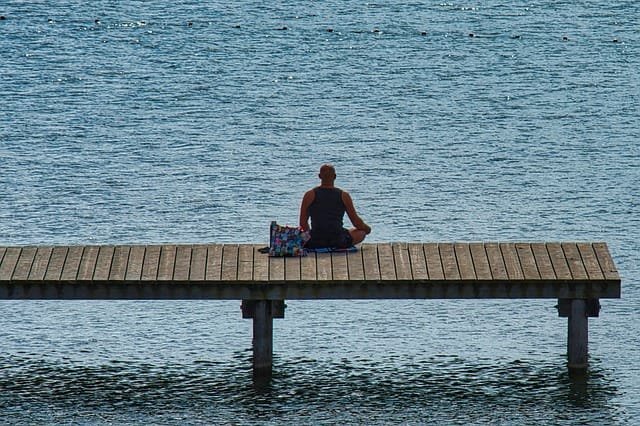Top 10 Proven Recovery Techniques for Optimal Fitness and Faster Muscle Healing

In the pursuit of fitness, muscle recovery is a crucial yet often overlooked aspect. Any seasoned athlete or fitness enthusiast knows the importance of effective recovery for avoiding injuries, reducing muscle soreness, and promoting muscle growth. Here, we dive into the top 10 proven recovery techniques to help you achieve optimal fitness and faster muscle healing.
1. Adequate Sleep
The Role of Sleep in Recovery
Sleep is the cornerstone of muscle recovery. While you sleep, your body undergoes numerous recovery processes, such as muscle repair, hormone regulation, and immune function optimization. Aim for 7-9 hours of quality sleep per night. Poor sleep can lead to increased levels of cortisol, a stress hormone that can impede muscle repair. Studies have shown that athletes who get adequate sleep perform better and recover more efficiently than those who don’t.
2. Proper Hydration
Hydrate for Healing
Water plays a significant role in almost every bodily function, including muscle repair. Exercising leads to fluid loss through sweat, so rehydrating is essential to maintain electrolyte balance, reduce muscle cramps, and assist in nutrient transport. Consuming water-rich foods like fruits and vegetables can also contribute to maintaining hydration levels.
3. Balanced Nutrition
Eating for Recovery
Nutrient intake is pivotal for muscle repair and growth. Focus on a balanced diet rich in:
- Proteins (chicken, fish, legumes) for muscle repair.
- Carbohydrates (whole grains, fruits) for energy replenishment.
- Fats (avocados, nuts) for hormone regulation.
- Vitamins and Minerals (leafy greens, berries) for overall health.
Additionally, consider the timing of your meals. Consuming protein and carbohydrates within 30 minutes post-workout can significantly enhance muscle recovery.
4. Active Recovery
Low-Intensity Activities
Active recovery involves low-intensity exercises that promote blood circulation without causing additional muscle strain. Activities like walking, swimming, or yoga can help eliminate metabolic waste products such as lactic acid from the muscles, reducing soreness and stiffness. A light, post-workout cool-down session can also aid in lowering delayed onset muscle soreness (DOMS).
5. Massage Therapy
Easing Muscle Tension
Massage therapy is widely recognized for its benefits in reducing muscle tension, improving circulation, and promoting relaxation. Techniques such as deep tissue massage, sports massage, or even self-myofascial release using foam rollers can enhance blood flow to muscles, bringing oxygen and nutrients that accelerate the healing process.
6. Cold and Heat Therapy
Contrasting Temperature Techniques
Alternating cold and heat therapy can significantly aid in muscle recovery. Cold therapy (cryotherapy) helps reduce inflammation and numb soreness, while heat therapy enhances blood flow to muscles, promoting nutrient delivery. Techniques like ice baths, cold packs, warm compresses, and hot showers can be strategically used to manage muscle recovery.
7. Stretching and Flexibility Exercises
Enhancing Muscle Elasticity
Stretching exercises maintain muscle flexibility, improve range of motion, and reduce muscle tension. Incorporate both static stretching post-workout and dynamic stretching during warm-ups to prepare muscle fibers for exertion and recovery. Yoga and Tai Chi are excellent disciplines that blend flexibility training with relaxation techniques.
8. Compression Clothing
Supportive Gear for Recovery
Wearing compression garments post-exercise can help enhance muscle recovery. These garments apply gentle pressure on muscles, promoting blood circulation and reducing swelling and muscle fatigue. Studies have shown that athletes using compression wear experience less muscle soreness and quicker recovery times.
9. Hydrotherapy
Water-Based Recovery
Hydrotherapy involves using water for recovery and includes methods like hydrostatic pressure, buoyancy, and the thermodynamic properties of water. Hydrostatic pressure reduces swelling and enhances circulation, while buoyancy decreases the stress on muscles and joints. Warm water can relax muscles and improve flexibility, making hydrotherapy an excellent recovery technique.
10. Mind-Body Techniques
Mental and Emotional Recovery Tools
Muscle recovery is not only physical but also mental. Techniques such as meditation, breathing exercises, and mindfulness can reduce stress hormones like cortisol and improve overall well-being. A well-rested mind can better adhere to recovery protocols, making mental relaxation an integral part of the muscle healing process.
Implementing the Techniques
To maximize the benefits of these recovery techniques, consider the following guide to incorporating them into your fitness routine:
1. Identify Your Needs** – Determine which recovery technique aligns best with your workout intensity, muscle strain, and personal preferences.
2. Create a Routine** – Establish a post-workout recovery routine that includes a combination of these methods. For example, you can start with a cool-down, followed by stretching, hydration, and a nutritious post-workout meal.
3. Listen to Your Body** – Pay attention to how your body responds to different recovery techniques. Customize your recovery plan based on what gives you the best results.
4. Consistency is Key** – Consistently apply these techniques to experience continual benefits. Sporadic use will not yield the same results as a well-maintained recovery regimen.
5. Seek Professional Advice** – If you’re unsure about incorporating certain techniques, consulting with fitness professionals, physiotherapists, or nutritionists can provide personalized insights tailored to your needs.
Conclusion
Muscle recovery is a multifaceted process requiring a balanced approach to various techniques. By prioritizing recovery, you’re not only preventing injuries and reducing soreness but also optimizing muscle growth and overall fitness performance. Integrate these top 10 proven recovery techniques into your fitness regimen to achieve optimal results and enjoy a fitter, healthier lifestyle. Remember, recovery is not a luxury; it’s a necessity for sustainable fitness progress.
#ChatGPT assisted in the creation of this article.




